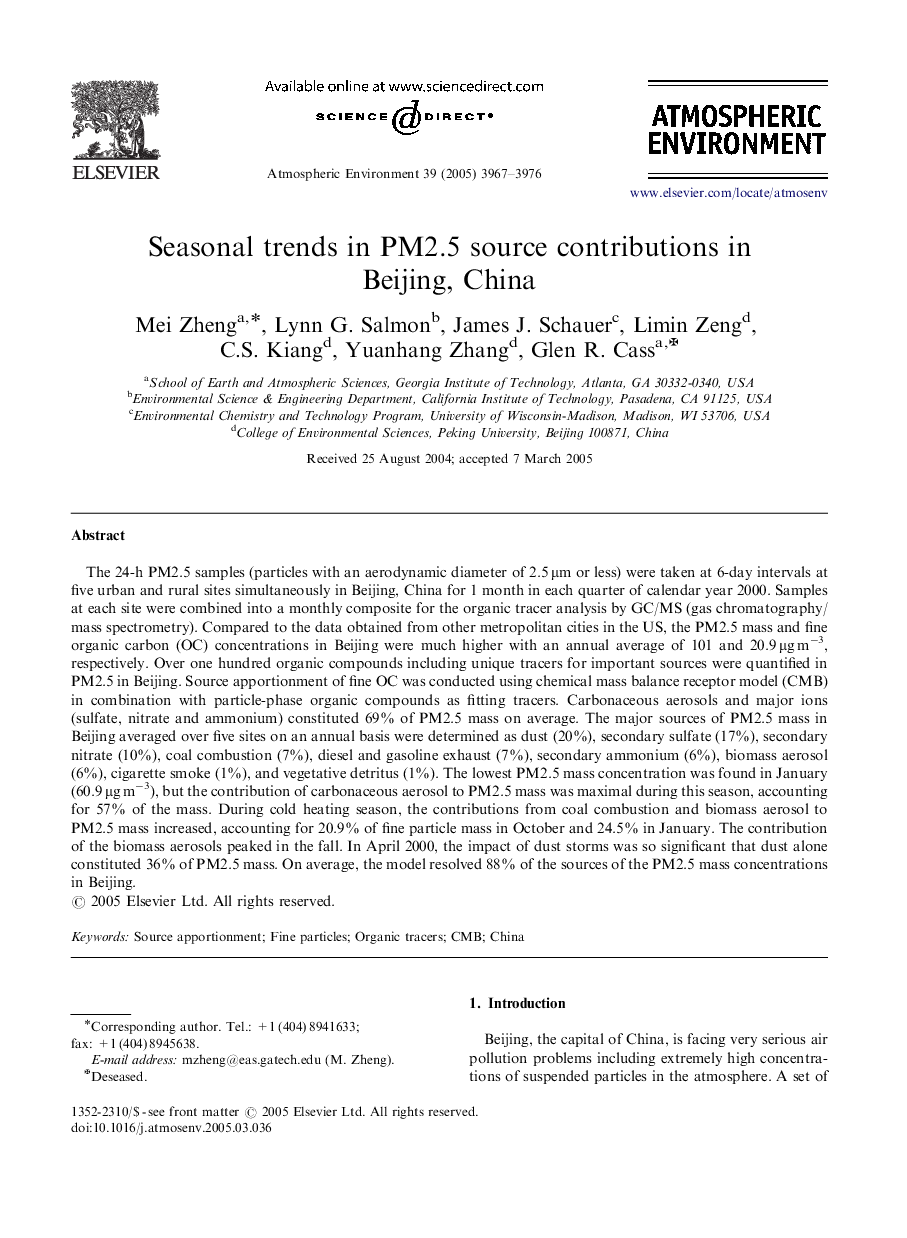| کد مقاله | کد نشریه | سال انتشار | مقاله انگلیسی | نسخه تمام متن |
|---|---|---|---|---|
| 4445280 | 1311279 | 2005 | 10 صفحه PDF | دانلود رایگان |

The 24-h PM2.5 samples (particles with an aerodynamic diameter of 2.5 μm or less) were taken at 6-day intervals at five urban and rural sites simultaneously in Beijing, China for 1 month in each quarter of calendar year 2000. Samples at each site were combined into a monthly composite for the organic tracer analysis by GC/MS (gas chromatography/mass spectrometry). Compared to the data obtained from other metropolitan cities in the US, the PM2.5 mass and fine organic carbon (OC) concentrations in Beijing were much higher with an annual average of 101 and 20.9 μg m−3, respectively. Over one hundred organic compounds including unique tracers for important sources were quantified in PM2.5 in Beijing. Source apportionment of fine OC was conducted using chemical mass balance receptor model (CMB) in combination with particle-phase organic compounds as fitting tracers. Carbonaceous aerosols and major ions (sulfate, nitrate and ammonium) constituted 69% of PM2.5 mass on average. The major sources of PM2.5 mass in Beijing averaged over five sites on an annual basis were determined as dust (20%), secondary sulfate (17%), secondary nitrate (10%), coal combustion (7%), diesel and gasoline exhaust (7%), secondary ammonium (6%), biomass aerosol (6%), cigarette smoke (1%), and vegetative detritus (1%). The lowest PM2.5 mass concentration was found in January (60.9 μg m−3), but the contribution of carbonaceous aerosol to PM2.5 mass was maximal during this season, accounting for 57% of the mass. During cold heating season, the contributions from coal combustion and biomass aerosol to PM2.5 mass increased, accounting for 20.9% of fine particle mass in October and 24.5% in January. The contribution of the biomass aerosols peaked in the fall. In April 2000, the impact of dust storms was so significant that dust alone constituted 36% of PM2.5 mass. On average, the model resolved 88% of the sources of the PM2.5 mass concentrations in Beijing.
Journal: Atmospheric Environment - Volume 39, Issue 22, July 2005, Pages 3967–3976